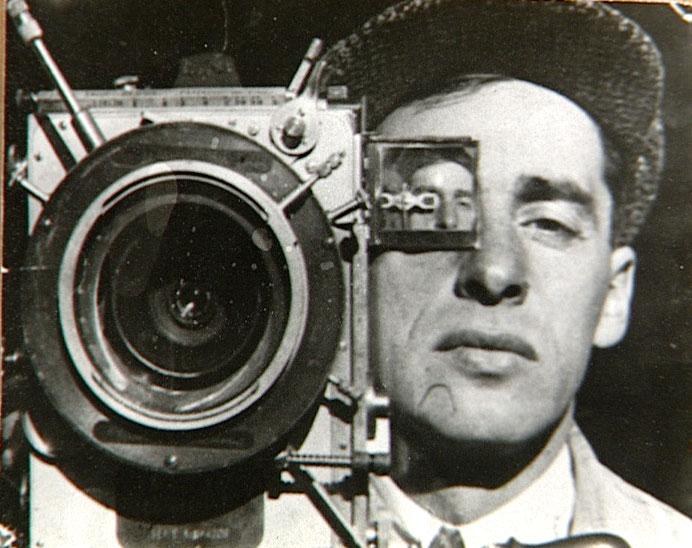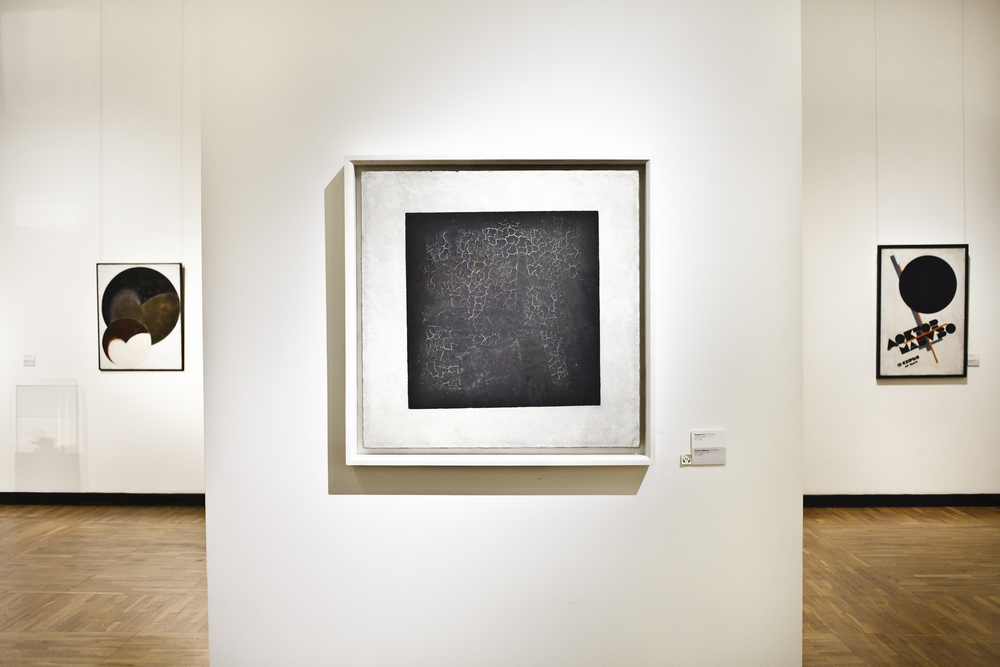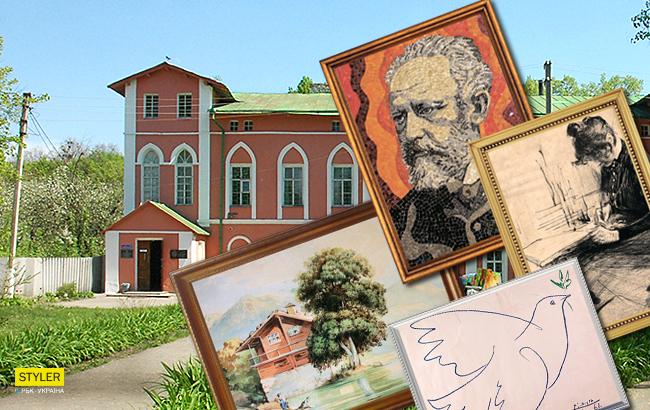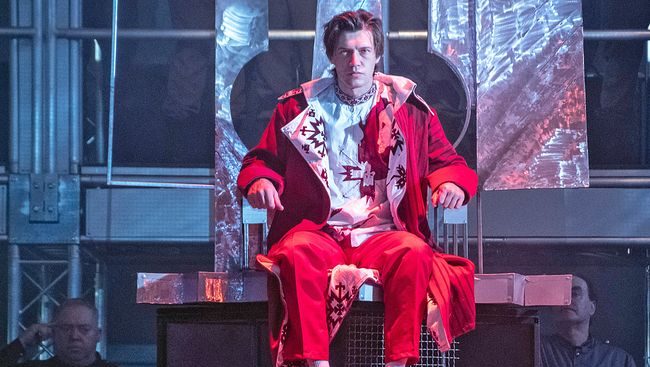Dzyga Vertov, a famous filmmaker of the early 20th century, is most often considered a “Russian filmmaker,” just as are many other Soviet-times artists. In fact, Vertov was of Jewish descent and produced films both in Russia and Ukraine. His films include some communist propaganda pieces, but one of his best-known masterpieces is the documentary Man with a Movie Camera.
Released in Kyiv in 1929, the silent film depicts daily life in a Soviet city in the late twenties -- mostly in Odesa on the Ukrainian coast of the Black Sea. The film introduced many innovations as well as experimental techniques and has gained much-deserved attention and value with time.



The controversial story of Dzyga Vertov
The story of Dzyga Vertov and his work says a lot about the Soviet political and cultural reality of the 1920s. His biography perfectly reflects the artificial triple reality that was imposed on Ukraine in the 1920s: the victory of the “international” communist revolution; the short-lived Ukrainization policy by the government of the Ukrainian SSR; and the de facto Russian military and political occupation of Ukraine, as well as of other east Europian countries. Growing up in the Jewish traditions, Vertov’s birth name was David Kaufman, but he Russified his name to Denis Arkadievich after the so-called Victory of Bolshevism in 1917. Later, he adopted a pseudonym Dzyga Vertov, which can be loosely translated from Ukrainian as a “spinning whirligig” or “one who twists a whirligig.”
Innovations in the 1920s that were not appreciated until the 1960s
Vertov was a staunch opponent of fiction films. He felt that the cinema of the future should focus on true reality, “without actors and scenery.” Pursuing these ideals, he gathered a group of like-minded filmmakers, kinoks, who were filming everyday life as it unfolded around them. At times, Vertov was overly radical in his approach -- at one point he assailed all fiction films, labeling them as the new "opiate for the masses." Through his work, Vertov tried to demonstrate that film can go anywhere. In one instance, he superimposed a shot of a camera operator setting up a camera atop a camera — a giant camera. In another, he superimposed a camera operator inside a beer glass.
Since Vertov and Kaufman [director and cinematographer] filmed everything themselves, the hardest work was done at the stage of assembling and editing. Records were labelled, numbered, sorted. Then Vertov and his wife mounted draft fragments -- "bazaar," "factory," "city traffic,” and so on -- and then analyzed the different fragments to see how they came together logically and emotionally. “It's funny that this process was also filmed and included in the movie,” writes Serhiy Keyn.The team worked on Man with a Movie Camera for almost three years. They filmed mainly in Odesa, but also in Kyiv, Kharkiv, and Moscow. Vertov wrote that while shooting, he was striving "for a new interpretation of an international film language … for its complete separation from the language of theater and literature."
Contemporaries criticized Vertov and his team on many occasions, as in these comments from mainstream Russian writers lya Ilf and Evgeny Petrov: “…but all this was minor compared to the cinematic excesses that he had made on the railroad. He considered his specialty shooting under the wheels of a train. By this he stopped the work of the railway junction for several hours. Seeing the skinny figure of the cameraman lying between the rails in his favorite pose – on his back, the train drivers faded with fear and were clutching their brake levers. But [the camera operator] encouraged them with cries, insisting to ride over him.”
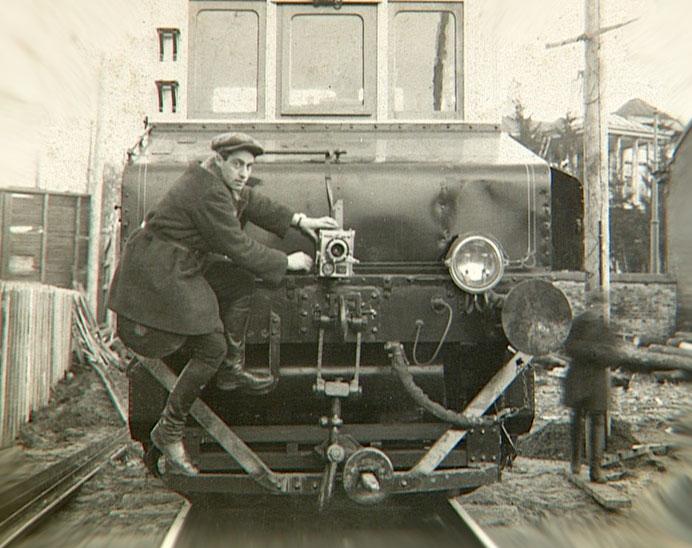
Our eyes see very little and very badly – so people created the microscope to let them see invisible phenomena -- they invented the telescope … now they have developed the cinecamera to penetrate more deeply into the visible world, to explore and record so that what is happening now and will have to be taken account of in the future, is not forgotten - Dzyga Vertov recorded in his “Provisional Instructions to Kino-Eye Groups,” 1926, exactly in the techno-optimistic manner of modernism.The premiere of Man with a Movie Camera took place on 6 January 1929 in Kyiv, on 9 April in Moscow, and 12 May in the United States. Upon the official release, Vertov issued a statement:
The film Man with a Movie Camera represents an experimentation in the cinematic communication of visual phenomena without the use of intertitles (a film without intertitles) without the help of a scenario (a film without a scenario) without the help of theatre (a film without actors, without sets, etc.) This new experimentation work by Kino-Eye is directed toward the creation of an authentically international absolute language of cinema on the basis of its complete separation from the language of theatre and literature.

Read also:
- Recovering the forgotten names of the Ukrainian avant-garde
- The three Ukrainian women breathing new life into ancient musical traditions
- Grandfather’s hut turned into Hutsul art residence in heart of Carpathians
- “They can destroy buildings, but not the spirit,” – Crimean Archbishop on Russia’s religious persecution
- Hutsuliya – the vivid colours of Ukraine’s Carpathian mountaineers (Photos)
- Modernized past: how today’s Ukrainian culture combines tradition and modernity
- Explore Ukrainian traditional culture with interactive site “Authentic Ukraine”
- Russian occupiers continue to destroy history and culture of Crimean Tatars
- Ukrainian artist Ivan Marchuk among Britain’s “top hundred living geniuses”
- Taras Shevchenko. The case of a personal fight against the Russian Empire
- Ukrainian story of Wassily Kandinsky and newly found watercolors featured in new book
- Rare postcards depict Ukrainian village life at turn of 20th century
- Displaced art. The IZOLYATSIA art center, having fled occupied Donetsk, flourishes in Kyiv
- A Look Into Ukraine’s World Famous Petrykivka Paintings

